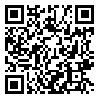Volume 1, Issue 2 (18 2002)
ijdld 2002, 1(2): 119-122 |
Back to browse issues page
Download citation:
BibTeX | RIS | EndNote | Medlars | ProCite | Reference Manager | RefWorks
Send citation to:



BibTeX | RIS | EndNote | Medlars | ProCite | Reference Manager | RefWorks
Send citation to:
Larijani B, Osfouri E. PREVALENCE OF TYPE 2 DIABETES AND IMPAIRED GLUCOSE TOLERANCE IN 34-60 YEAR-OLDS IN BUSHEHR USING A.D.A. AND W.H.O. CRITERIA. ijdld 2002; 1 (2) :119-122
URL: http://ijdld.tums.ac.ir/article-1-483-en.html
URL: http://ijdld.tums.ac.ir/article-1-483-en.html
Abstract: (10667 Views)
Introduction: The prevalence of type 2 diabetes is increasing daily all around the world and is a serious threat to the well-being of the community in terms of renal failure, cardiovascular disease, blindness, and neuropathy. The assessment of difference screening approaches is of great importance in this disease. We compared ADA and WHO criteria for the diagnosis of type 2 diabetes.
Methods: 982 individuals (age range: 30 to 64 years), residents of the city of Bushehr, were chosen by systematic random sampling for this study, each providing a fasting blood sample for a standard oral glucose tolerance test. Plasma glucose was measured by the glucose oxidase-peroxidase method, using a Technikon RA1000 autoanalyser. Data was analysed with the Chi-squared and Student’s t tests and, when required, Fisher’s Exact test.
Results: 354 (36%) men and 628 (64%) women took part in this study. 42.9% were in the 30-39 age group. 69 (20 men and 49 women) of the 982, that is 7% of the sample, had known diabetes before recruitment into the study. The crude prevalence of type 2 diabetes and impaired glucose tolerance using WHO criteria was 13.6 and 15.6 percent, respectively. The crude prevalence of type 2 diabetes using ADA criteria was 13.4 percent. 51% of patients were already aware of their disease. The sensitivity of fasting blood glucose testing for detecting diabetes was 45.8% using WHO and 62.5% using ADA criteria. Both sets of criteria were equally specific.
Conclusion: Given the overall prevalence of glucose intolerance (impaired glucose tolerance and type 2 diabetes) in Bushehr, it should be considered as a high-prevalence area for diabetes. Accordingly, we recommend screening with fasting plasma glucose and oral glucose tolerance testing.
Methods: 982 individuals (age range: 30 to 64 years), residents of the city of Bushehr, were chosen by systematic random sampling for this study, each providing a fasting blood sample for a standard oral glucose tolerance test. Plasma glucose was measured by the glucose oxidase-peroxidase method, using a Technikon RA1000 autoanalyser. Data was analysed with the Chi-squared and Student’s t tests and, when required, Fisher’s Exact test.
Results: 354 (36%) men and 628 (64%) women took part in this study. 42.9% were in the 30-39 age group. 69 (20 men and 49 women) of the 982, that is 7% of the sample, had known diabetes before recruitment into the study. The crude prevalence of type 2 diabetes and impaired glucose tolerance using WHO criteria was 13.6 and 15.6 percent, respectively. The crude prevalence of type 2 diabetes using ADA criteria was 13.4 percent. 51% of patients were already aware of their disease. The sensitivity of fasting blood glucose testing for detecting diabetes was 45.8% using WHO and 62.5% using ADA criteria. Both sets of criteria were equally specific.
Conclusion: Given the overall prevalence of glucose intolerance (impaired glucose tolerance and type 2 diabetes) in Bushehr, it should be considered as a high-prevalence area for diabetes. Accordingly, we recommend screening with fasting plasma glucose and oral glucose tolerance testing.
| Rights and permissions | |
 |
This work is licensed under a Creative Commons Attribution-NonCommercial 4.0 International License. |





